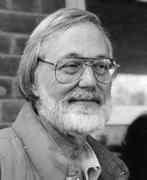Person: Milnor, John Willard

John Milnor is an American mathematician known for his work in differential topology, K-theory and dynamical systems.
Mathematical Profile (Excerpt):
- Joseph Milnor, born in Williamsport, Pennsylvania, graduated from Lehigh University in 1912 with first class honours in mathematics.
- Milnor (known to his friends and colleagues as Jack) was an undergraduate at Princeton University, receiving his A.B. in 1951.
- Most outstanding mathematicians develop a passion for the subject when at school but not so Milnor.
- This paper, On the total curvature of knots, was accepted for publication in 1948 when Milnor was only seventeen years old.
- The paper came as the result of the differential geometry course Milnor attended given by Albert Tucker.
- In the lectures Karol Borsuk's question on the total curvature of a knotted curve was mentioned and Milnor solved the problem "after a few days thought".
- In particular he played Kriegspiel (a game of blindfold chess), Go and Nash (a game invented by John Nash and now called Hex).
- John Nash was at Princeton during these years and Milnor and Nash often talked about game theory.
- Milnor's next paper, written while he was undertaking research, was Sums of positional games (1953).
- This was only one of several papers that Milnor published in 1953.
- In 1954 Milnor received his doctorate for his 44-page thesis Isotopy of Links written under Ralph Fox's supervision.
- Milnor remained on the staff at Princeton where he was an Alfred P Sloan fellow from 1955 until 1959.
- He was promoted to professor in 1960 then, in 1962, Milnor was appointed to the Henry Putman chair.
- Milnor was awarded a Fields Medal at the 1962 International Congress of Mathematicians in Stockholm.
- The reason that Milnor could use them to distinguish the differential properties of manifolds is because they have arithmetic properties, involving the Bernoulli numbers, which reflect in a deep and not fully understood way these differential properties.
- It discusses Milnor's theorem, which shows that the total curvature of a knot is at least 4.
- Among other results discussed are Milnor's result showing that we cannot necessarily "hear the shape" of a 16-dimensional torus, and another result giving upper and lower bounds on the number of distinct words of a given length in a finitely generated subgroup of the fundamental group.
- Milnor's current interest is dynamics, especially holomorphic dynamics.
- Milnor cast his eye on dynamical systems theory in the mid-1970s.
- Milnor's approach was to start over from the very beginning, looking at the simplest nontrivial families of maps.
- Milnor's work has opened several new directions in this field, and has given us many basic concepts, challenging problems and nice theorems.
- Milnor has received many awards and honours for his extraordinarily important contributions.
- Milnor has written eight important books: Morse theory (1963); Lectures on the h-cobordism theorem (1965); Topology from the differentiable viewpoint (1965); Singular points of complex hypersurfaces (1968); Introduction to algebraic K-theory (1971); (with Dale Husemoller) Symmetric bilinear forms (1973); (with James D Stasheff) Characteristic classes (1974); and Dynamics in one complex variable (1999).
- She had been appointed to the University of Warwick in 1976 but resigned her tenured post there two years later and accepted an untenured post at the State University of New York at Stony Brook so that she could be close to Milnor.
Born 20 February 1931, Orange, New Jersey, USA.
View full biography at MacTutor
Tags relevant for this person:
Prize Abel, Prize Fields Medal, Origin Usa, Prize Wolf
Thank you to the contributors under CC BY-SA 4.0! 

- Github:
-

- non-Github:
- @J-J-O'Connor
- @E-F-Robertson
References
Adapted from other CC BY-SA 4.0 Sources:
- O’Connor, John J; Robertson, Edmund F: MacTutor History of Mathematics Archive
